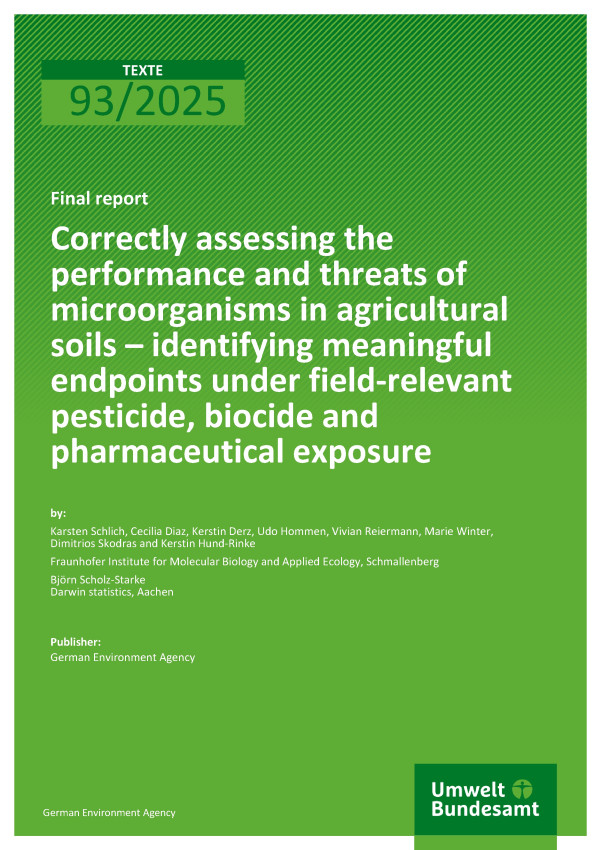The aim of the MICROSOIL project was to identify meaningful endpoints for assessing the effects of plant protection products, veterinary pharmaceuticals and biocides on microorganisms in agricultural soils.
The current risk assessment for plant protection products (PPPs) considers the effects of PPPs on nitrogen turnover by microorganisms in test soils according to the OECD 216 testguideline. However, this laboratory test does not cover all risks to microorganisms caused by PPPs. Within this project, five alternative methods to assess the effects of chemicals on the soil microbial community were identified, based on a literature review and a scoring system . To compare the sensitivity of these methods to chemicals, laboratory tests were carried out with three soils and six test substances, each.
Based on the MICROSOIL results, it is recommended to add an additional test on bacterial function (ISO 20130, enzymatic activity) and a structural test on the effects on mycorrhizal fungi (ISO 10832) to the first tier risk assessment of chemicals. A fingerprinting method to assess the impact on community structure is also recommended but needs to be further elaborated.
The results of this project also show that the current risk assessment for veterinary pharmaceuticals may not cover the development of antibiotic resistance in environmentally relevant soil bacteria.
This project also investigated the degradation performance of microorganisms after multiple applications of chemicals. Multiple applications of the same substance as well as the presence of another substance in the soil had both positive and negative effects on the degradation rate of the test substances.
The results presented here underline the need to update the risk assessment framework for soil organisms, exposed to chemicals and provide concrete suggestions for a new risk assessment scheme.





